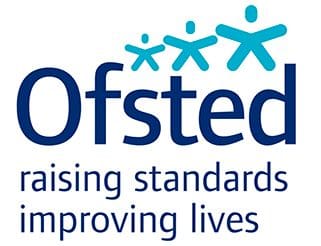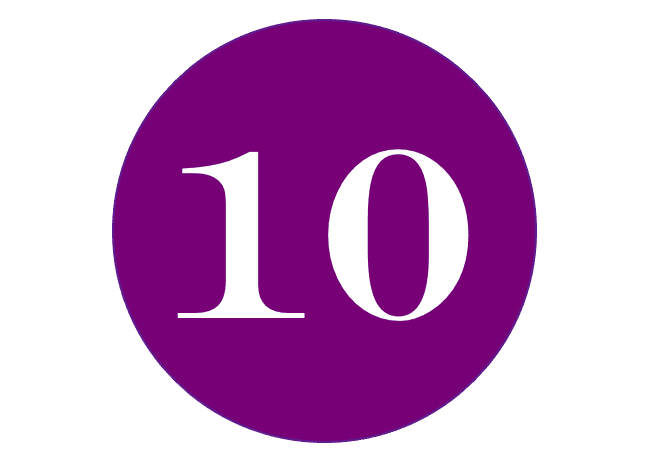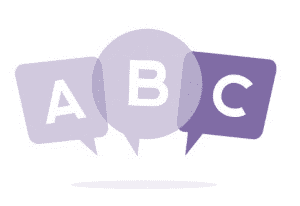
On 14 July 2021 OFSTED published its lengthy review of research findings into school history.
You can access it here. https://www.gov.uk/government/publications/research-review-series-history/research-review-series-history
I actually think there are good reasons NOT to read its 40-odd pages just at the moment, and not only because it’s the end of a very tiring and traumatic school year…..and you need a good rest!
There are other reasons too, though. Not only is it very long-winded, highly repetitive and largely otiose, it also (crucially) is very much geared to secondary history teaching. True, there are references to primary practice, mainly repeated references to Anglo-Saxon conversion to Christianity, (for some bizarre reason), but you can tell from the 14 pages of footnotes that less than half a page cites primary practice and only 2 that could claim to apply to both primary and secondary. There is woefully little that would be of direct use to KS1 teachers, unfortunately.
So, you know it is there and you can access it at any time you feel masochistic. To spare you, I have distilled the key advice that applies to PRIMARY schools into the following bullet points, which I hope you find helpful. I have located them within the document in case you feel you want to know more. The comments below each item that are italicized serve as my commentary.
1. Curriculum time
OFSTED reports that “in primary schools pupils might study history for between 1 and 2 hours per fortnight. This time might be organized into ‘blocks’ where pupils study history for a number of weeks. P. 3
Note there is no distinction made between KS1 and KS2and no judgement here about the efficacy of blocked time as opposed to weekly session. Nor is there any pejorative reference to cross-curricular work, as there has been in previous reports. This represents a proper focus on outcomes rather than structures. For their earlier views on the disadvantages of a cross-curricular approach see here >>
2. Progression
Pupils make progress in history through building their knowledge of the past, and of how historians study the past and construct accounts. Teaching supports pupil progress by embedding frameworks of content and concepts that enable pupils to access future material. Abstract concepts are best learned through meaningful examples and repeated encounters in different contexts. P.4
3. The history curriculum
A high-quality history curriculum requires careful decisions on all 3 of the levels:
- a. topic choices
- content choices
- decisions on further detail and emphasis within the broad content selected (p.5)
“High quality curriculum design is likely to be characterized by a strong and sophisticated rationale emphasising particular content”.(p.7)
4. Rationale for the history curriculum and content selection
The decisions made by individual teachers when teaching history are likely to be better judged and managed when underlying rationales for content selection are fully understood and when teachers have had opportunities to regularly discuss content selection and its purposes, as well as a marriage of disciplinary and substantive content.
Curriculum decisions require a sound rationale for content selection and emphasis. P.5
You can find guidance on writing your overall rationale here >>
For each of our medium-term plans we provide a detailed rationale explaining the reason why the content was chosen, how it fits with earlier and later learning and the emphases given to particular aspects.
5. Securing progression
Pupils are best able to learn knowledge that will be important to future learning when it is taught through repeated encounters with meaningful examples. Pupils make progress by developing:
- knowledge about the past- what is referred to as substantive knowledge
- their knowledge about how historians investigate the past and how they construct historical claims and accounts. This is often called disciplinary knowledge. Acquiring disciplinary knowledge is made purposeful and meaningful to pupils when it is related to particular historical problems, when pupils have sufficient knowledge of the period, setting and topic to reason, to make inferences and to grasp the terms that others are using in any debate.
Deploying both substantive and disciplinary knowledge in combination is what gives pupils the capacity to construct historical arguments or analyse sources.p.6
You will see that on the website the device we use consistently to enable this interplay is to frame enquiry questions around important content. This is no easy task. When there is so much content how do you reduce it to what matters most? Including too much and you run the risk of it being just ‘one damn thing after another’, rushed to get it all ’covered’, or you simply run out of time and move onto the next topic. We have boldly stuck to just6 key questions, plus a home study enquiry. By posing each question as a puzzle to solve, one that historians grapple with, we stay faithful to the enquiry approach whilst making sure that no major aspect is left untaught.
6. Teaching the concepts in history
a. Chronology
“When curriculum design does not take chronological knowledge into consideration, pupils’ understanding of the past is likely to be disconnected and episodic”. Pupils may know about events and periods in history but not the connections between places and times in the past. Pupils should be given opportunities to study aspects of the past in overview and in depth.
At KS2 where the problem is greater, this needs to go beyond an overview of ancient civilizations or a long-term thematic study to include comparisons over time . Asking the question ‘what was happening elsewhere at this time is really helpful. Pupils will only understand the relative sophistication of Benin, Maya or Islam in the 10th century AD if they can relate to what late Saxon Britain was like. So there is so much more to it than teaching topics in chronological order, even if this were remotely possible in small schools with mixed aged classes and rolling programmes. What matters more is that pupils build up a mental map of the past. In our experience they are far more likely to secure this is they are able to look backwards in time as well as just forwards. Failure to do this results in all sorts of problems. When pupils study the Anglo-Saxons and Vikings what do they look at next? Certainly not the Middle Ages and for most, not even the Tudors.So what sense can they make of the gap of many centuries before they pick up their next British topi which might even be a millennium later in the shape of the Second World War. To a certain extent the thematic study at KS2 helps with looking forwards and backwards as does the local history unit, but that is less than 15% of the history curriculum.
You can find much greater detail about teaching chronology at KS1 here >>.
You can find similar advice on KS2 here >>
We recommended that you look at the use of TIMEBOX which lots of schools have found a really fun way of making chronology stick in the memory.
b. Causes and consequences
Recent research has used the metaphor of moving parts to help pupils to grasp the complexity of why events happen.As pupils move through the key stages they encounter events with more and more complicated ‘moving parts’.
On p.21 of OFSTED’s report, two suggestions are made about teaching approaches to causation.
Idea 1 Decision-making simulations to over come the common misconception that historical events were inevitable. You can see this exemplified in our KS2 lesson on why Claudius invaded in which pupils act as advisers to the emperor Claudius some encouraging invasion ; other urging caution. You can see the lesson here >>.
Idea 2 activities that explore the nature of causal relationships.
At KS1 we often use diamond-4 activities where pupils have to identify valid reasons and then have to rank them, whereas at KS2 we use more history mysteries and explanation builders where a wider range of factors has to be considered as well as their inter-relationship. Good example of this is why the Athenians were victorious at Marathon which you can find here and why did the Mayan empire seem to come to such an abrupt end which you can find here
On p.22 OFSTED offers an example of looking at consequence, which I leave to you to consider how helpful it is!
‘Pupils in Y5 who have studied both the Byzantine empire and the Islamic empire across their earlierKS2 work can reflect back on the consequences of growing trade for the spread of religion in the eastern Mediterranean, North Africa or the Middle East”. Sound like your Y5 mixed ability lessons?!!
Help
At KS1 we often use conscience alley as a device to show an individual’s actions were not predetermined.
All the key ideas about cause at KS1 and KS2 can be found here >>
c. Change and continuity.
The 3 suggestions offered in the report on p.22 are:
* teaching historical language for expressing ideas about change
* using metaphor
* using visual representations of change or models to represent abstract ideas.
All these three come from secondary practice, but could be used say in KS2 to describe the nature of change in the Victorian period. Was it fast, gradual, revolutionary?
d. Similarity and difference
e. Significance
No helpful examples are given in the report that could be used in KS1or2 but you will find in the famous people section of KS1 part of the site a number of varied approaches to the Why should we remember..? At KS2 we often pose the question, as with Benin, What was so SIGNIFICANT about the Benin society at that time that makes us study it in school? By setting the challenge for pupils to find out they are actively considering and using the criteria that historians use
e. Enquiry ( see point 9)
f. Interpretations
This issue here revolves around the danger of pupils thinking that views of the past are fixed. By steadily introducing them to a wide range of REAL, but different, interpretations pupils will see first HOW they differ and then go on to explore why. You will notice how often we use real examples even at KS1, for example plinths on statues, film excerpts, museum exhibits etc
7. Learning through meaningful examples and repeated encounters
“New knowledge is hard to learn when it is highly abstract or unfamiliar to pupils (p.12).
The report suggests personalizing the content. On p.12 they give this example “ It is much easier for pupils to learn about how King Aethelbert might have weighed up his decision to convert to Christianity as king of Kent than for pupils to learn about a more abstract idea such as the ‘interrelationship between politics and religion’. Sounds pretty common-sense to me but I pass on OFSTED’s example(p.12)
Another example is offered to back up the idea that pupils need reinforcement. Take the idea of ’taking power’ cited on p.13 “If a pupil doe snot have enough prior knowledge they will struggle to understand this concept’ says OFSTED. This may hinder their ability to make sense of a statement like ‘Saxons took power in England’. However, a pupil’s understanding of similar historical events from previous topics ( such as the Roman invasion of Britain might ensure that the concept of ‘taking power’ has some meaning for them.”
Once again, pretty self-evident. What is important is the constant need to make connection so other relevant content. This might be worth highlighting in medium term plans even if it would probably happen anyway.
8. Use of story
“New information is easier to comprehend and remember when organized as a story as stories exemplify complex and abstract ideas in meaningful, human-scale ways”
The incidental detail in these stories often helps to paint a more vivid picture than the spare details from a textbook. At KS1 story is vital. The contextual detail pupils can pick up from stories set in the past is often amazing. For that reason we have advocated the use of story in most of our planners. Take a look at the most recent Y1 Toys planner……………………… for example where story is used to start the topic and at other times throughout.
As Daniel Willingham has shown, stories are ‘pyschologically privileged’ , leading to more durable learning. Pupils find it very satisfying when they know and can re-tell the story and very unsatisfactory when what they are learning about does not fit within some comprehensible narrative.
9.The use of enquiry
It is accepted that historical enquiry is very far from many pupils’ everyday mode of thinking. They tend to see finding out about the past as a ‘fact-finding’ activity in which they, like historians, search for a piece of evidence that will reveal or validate a singular truth about the past. That may be a useful starting point, but the nature of historical enquiry is far more complex and pupils need to get a feel fort his complexity as they move through KS2. It is important here to approach enquiry through specific examples of how historians have approached issues in particular contexts. P.17
That is why we often pose questions which are deliberately contentious and for which there are multiple possible answers. Only in this way do pupils get a feel that the past is contested and that not all evidence points in the same direction.
Making enquiry seem like detective work is usually helpful but it is important to avoid reducing our questioning of sources to over-simplistic formulae such as the 5Ws ( who, what when ,where, why).p.17
10. Making history analytical
Pupils are more likely to remember content that they have engaged with analytically. It is also true that approaches to develop pupils’ disciplinary knowledge are also likely to secure pupils’ substantive knowledge as well.
That is why we have blended perplexing enquiry questions on central issues which lie at the heart of the study of particular periods.
The article in the TES summarises the report slightly differently, so I include it for your reference.


